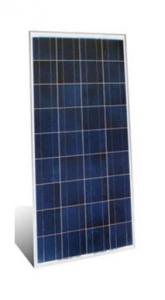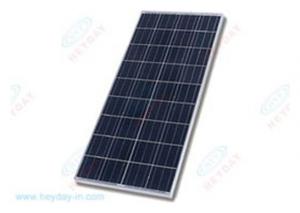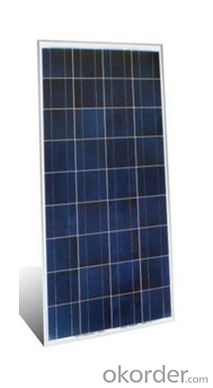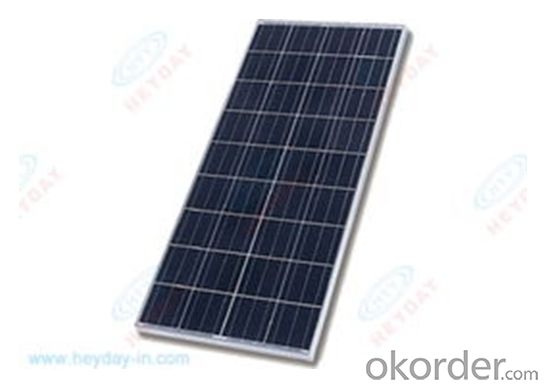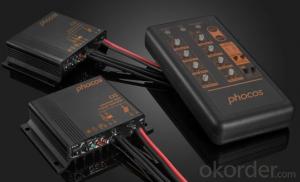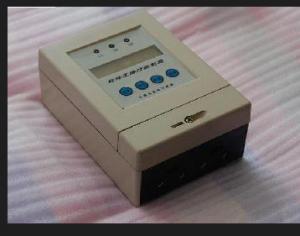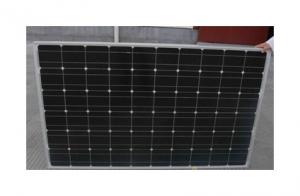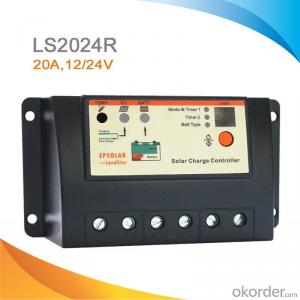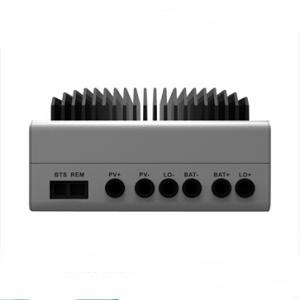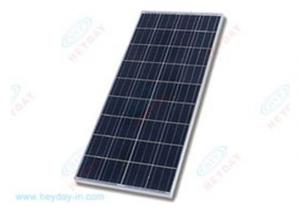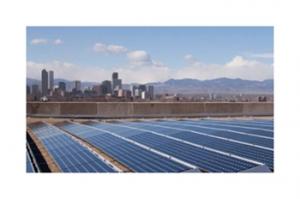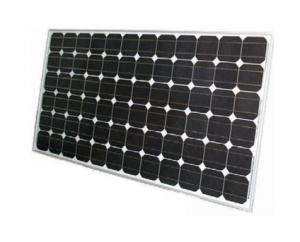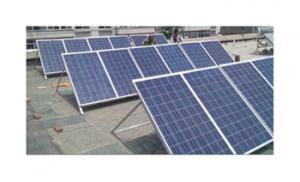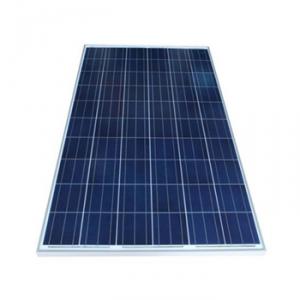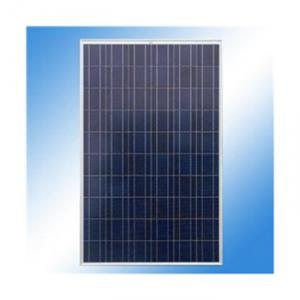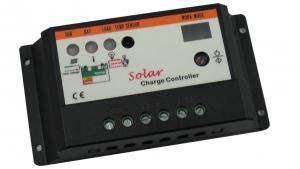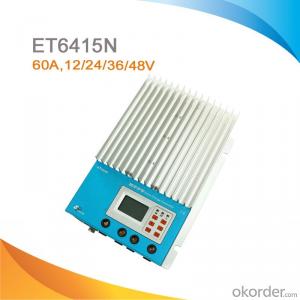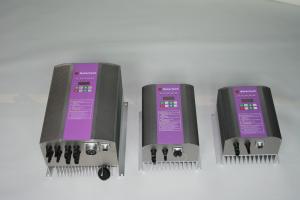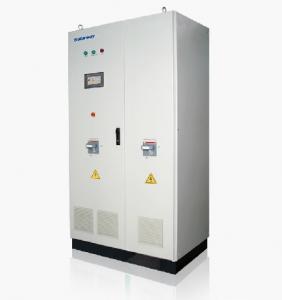Mppt Solar Controllers Compatible Poly-Crystalline 130W 156*156 Solar Modules
OKorder Service Pledge
OKorder Financial Service
You Might Also Like
Solar Module Descriptions:
Solar Power Modules (known as Photovoltaics - PV) can generate electricity for your home or business, either as part of a stand-alone solar power system, or for buildings already connected to the local electricity network.
Customers benefit from our progressive system innovations. Around the world, we meet our customers' desire for the greatest possible reliability, long-term performance and aesthetic integration. No matter which kind of roof – we always have the right solution.
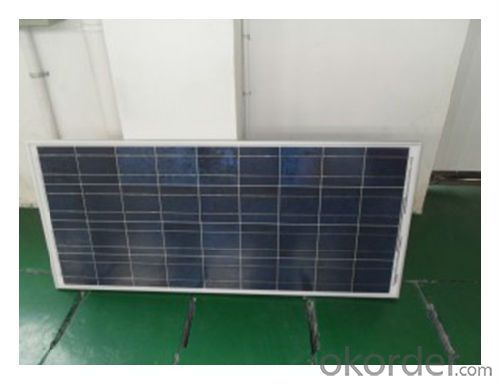
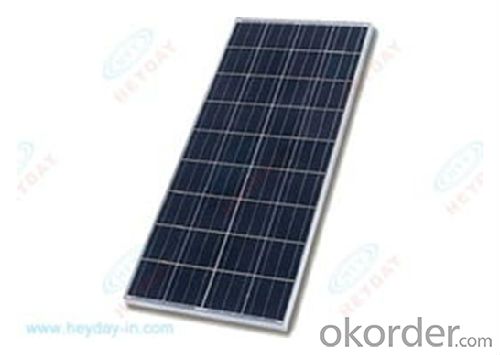
Electrical Characteristics
Max-power (W) | 130 |
Max-Power Voltage (V) | 17.9 |
Max-Power Current (A) | 7.30 |
Open-Circuit Voltage (V) | 21.74 |
Short-Circuit Current (A) | 8.05 |
Mechanical Characteristics
Cable type, Diameter and Length | 4mm2, TUV certified, 1000mm |
Type of Connector | Compatible with MC4 plug |
Arrangement of cells | 4*9 |
Cell Size | 156*156 |
Dimension | 1482*676*40 |
Weight | 12Kg |
Glass, Type and Thickness | High Transmission, Low Iron, Tempered Glass 3.2mm |
Features
Guaranteed positive tolerance 0/+5w ensures power output reliability
Strong aluminum frames module can bear snow loads up to 5400Pa and wind loads up to 2400Pa.
Excellent performance under low light environments (mornings evenings and cloudy days)
12 years for product defects in materials and workmanship and 25 years for 80% of warranted minimum power.
Certifications and standards: IEC 61215.
Manufactured according to International Quality and Environment Management System (ISO9001, ISO14100).
FAQ
Q: Do you have any MOQ limit?
Our MOQ is 200 pieces.
Q: How long is the warranty period for the solar modules?
15 years 90% of its nominal power rating.
25 years 80% of its nominal power rating
- Q: Can a solar controller be used with a solar-powered biomass plant?
- Yes, a solar controller can be used with a solar-powered biomass plant. A solar controller regulates and optimizes the flow of electricity from solar panels, ensuring efficient power generation. In a solar-powered biomass plant, solar panels can be used to supplement the energy needs of the biomass plant by providing additional electricity. The solar controller ensures that the solar panels are connected and integrated seamlessly with the biomass plant's electrical system, maximizing the utilization of renewable energy sources.
- Q: Can a solar controller be used with a solar-powered remote sensing system?
- A solar-powered remote sensing system can utilize a solar controller. This device regulates the power output of a solar panel, ensuring ideal battery charging and electrical device powering. By employing a solar controller, the system's batteries can be effectively charged, subsequently empowering the remote sensing equipment. This practice guarantees proper battery charging and maintenance, thus maximizing the efficiency and dependability of the remote sensing system. Moreover, a solar controller also safeguards against battery overcharging or discharging, ultimately extending their lifespan. All in all, it is highly recommended to incorporate a solar controller in a solar-powered remote sensing system to optimize performance and longevity.
- Q: What is the maximum input power that a solar controller can handle?
- The specific model and technical specifications of a solar controller determine its maximum input power capacity. Solar controllers are generally designed to accommodate various solar panel configurations and sizes by being capable of handling a wide range of input power levels. The maximum input power capacity of a solar controller is typically indicated by its maximum supported solar panel wattage. For instance, a solar controller may have a rating of 300 watts or 600 watts for its maximum input power. This means that it can effectively regulate and convert the energy generated by solar panels with a combined wattage of up to the specified power level. To ensure optimal performance and prevent any potential damage to the solar controller, it is crucial to select a controller that can handle the maximum input power of the solar panel system. Exceeding the maximum input power rating of a solar controller can result in overheating, reduced efficiency, or even failure of the controller. When choosing a solar controller, it is advisable to consider the total wattage of the solar panels in the system and select a controller that can comfortably handle that power level. Additionally, consulting the manufacturer's specifications and guidelines for proper selection and installation of the solar controller is recommended to ensure compatibility and safety.
- Q: Can a solar controller be used with solar-powered marine systems?
- Yes, a solar controller can be used with solar-powered marine systems. A solar controller helps regulate and optimize the charging process of batteries connected to solar panels. This is essential in marine systems as it helps protect the batteries from overcharging and provides efficient power management.
- Q: How does a solar controller prevent damage to the solar panels during high voltage conditions?
- Playing a crucial role in safeguarding solar panels from high voltage conditions, a solar controller, also known as a charge controller, acts as a regulator between the panels and the battery or power grid. Its primary function is to carefully control and maintain the voltage and current levels within safe limits. When faced with excessive sunlight or a fully charged battery, the solar controller swiftly detects the rise in voltage and implements necessary measures to prevent any potential damage. It utilizes various techniques to regulate the solar panels' output and shield them from harm. To begin with, the solar controller prevents battery overcharging, a function of utmost importance. Once the battery reaches its full charge, the solar controller automatically disconnects the panels, effectively halting the charging process. This preventive measure safeguards the battery from degradation and extends its lifespan. By disconnecting the panels during high voltage conditions, the solar controller ensures optimal operation without subjecting them to excessive strain. Furthermore, the solar controller incorporates pulse width modulation (PWM) or maximum power point tracking (MPPT) techniques to regulate the voltage and current output of the panels. PWM controllers intermittently interrupt the charging current to maintain a stable voltage level, eliminating voltage spikes that could potentially harm the panels. On the other hand, MPPT controllers continuously monitor the panels' output and adjust the voltage and current to maximize energy harvesting efficiency. This not only optimizes the panels' performance but also prevents any potential damage that may occur during high voltage conditions. In conclusion, a solar controller safeguards solar panels from damage during high voltage conditions by disconnecting them from the battery to prevent overcharging and utilizing techniques like PWM or MPPT to regulate the voltage and current levels. These measures guarantee the panels' safe operation, ensuring maximum performance and an extended lifespan.
- Q: What is the maximum power handling capacity of a solar controller?
- The maximum power handling capacity of a solar controller varies depending on the specific model and brand. However, high-quality solar controllers typically have a maximum power handling capacity of around 60 to 100 amps, allowing them to handle up to several thousand watts of solar power.
- Q: How do you determine the optimal charging voltage for your batteries using a solar controller?
- To determine the optimal charging voltage for batteries using a solar controller, you need to refer to the manufacturer's specifications or guidelines for your specific batteries. The recommended charging voltage is usually provided by the battery manufacturer and may vary based on the battery chemistry and capacity. By adjusting the solar controller's settings within the recommended voltage range, you can ensure efficient and safe charging without overcharging or damaging the batteries.
- Q: How do I connect a solar controller to a solar-powered water heater?
- To establish a connection between a solar controller and a solar-powered water heater, a series of steps must be followed: 1. Identification of the solar controller is the first step. This device regulates the energy flow from the solar panels to the water heater. It is typically situated in close proximity to the solar panels and possesses various input and output terminals. 2. The type of solar controller needs to be determined. There are several options available, including PWM (Pulse Width Modulation) and MPPT (Maximum Power Point Tracking). It is important to ensure that the appropriate controller for your system is obtained. 3. The location of the water heater must be determined. The input and output terminals of the water heater are usually labeled as "inlet" and "outlet". 4. The solar panels need to be connected to the input terminals of the solar controller. The manufacturer's instructions should be followed carefully to ensure proper wiring, and it is essential to ensure that the positive and negative terminals are connected correctly. 5. The outlet terminals of the solar controller should be connected to the inlet terminals of the water heater. Once again, the manufacturer's instructions should be consulted for accurate wiring. 6. Configuration of the solar controller may be necessary based on the specific requirements of your system. This may involve the adjustment of temperature limits, flow rates, or other parameters. 7. The system should be tested after the connections and configuration are complete. This is to verify that the system is functioning correctly. Monitoring the water temperature and flow will indicate whether the solar controller is effectively heating the water. Always remember to consult the user manual or seek professional assistance if any step is unclear or if there are any concerns. It is crucial to prioritize safety precautions when working with electrical components.
- Q: Can a solar controller be used in a solar-powered electric bike charging system?
- Yes, a solar controller can be used in a solar-powered electric bike charging system. A solar controller helps regulate the flow of electricity from the solar panels to the battery, preventing overcharging and optimizing charging efficiency. By using a solar controller, the charging system can effectively harness solar energy and charge the electric bike's battery safely and efficiently.
- Q: How do I prevent overcharging of batteries with a solar controller?
- To prevent overcharging of batteries with a solar controller, you can follow a few simple steps. First, ensure that the solar controller you are using is equipped with a built-in charge controller or purchase an external charge controller. This device regulates the amount of charge flowing into the batteries and prevents overcharging. Additionally, make sure to correctly set the charge controller's parameters, such as the float voltage and absorption voltage, according to the battery manufacturer's recommendations. Regularly monitor the battery voltage levels and adjust the charge controller settings if necessary. Lastly, consider using a battery monitoring system to keep track of the battery's state of charge and prevent overcharging.
Send your message to us
Mppt Solar Controllers Compatible Poly-Crystalline 130W 156*156 Solar Modules
OKorder Service Pledge
OKorder Financial Service
Similar products
Hot products
Hot Searches
Related keywords
